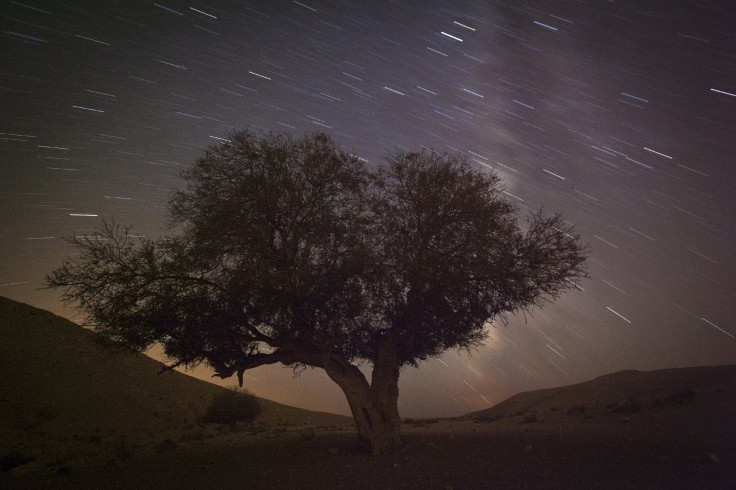Meteor Shower Eta Aquarid From Halley's Comet 2013

If you looked up this weekend, you may have caught a glimpse of the annual meteor shower, Eta Aquarid, caused by Halley’s Comet. NASA announced last week that the annual sky show could be viewed by the naked eye Sunday.
The Eta Aquarid meteor show was expected to display an estimated 30 to 40 meteors per hour. Those looking to view the celestial show were advised to find a location away from bright lights, with NASA suggesting in a statement that you allow your eyes 30 minutes to adjust to the dark before the show begins for the optimum viewing experience.
“Lie flat on your back on a blanket, lawn chair or sleeping bag and look up, taking in as much of the sky as possible. ... After about 30 minutes in the dark, your eyes will adapt, and you will begin to see meteors,” NASA said in a statement Sunday.
For those who wanted to view the show from the comfort of their own home, NASA live-streamed the event. Space enthusiasts also had the chance to chat live with Bill Cooke, head of NASA’s Meteoroid Environment Office, during the event.
According to NASA, the annual event occurs during the spring season when the Earth passes through Halley’s Comet debris trail; the burning of the cosmic pieces is what results in the beloved celestial show. While Halley’s Comet is responsible for the affair, the comet itself is only visible on Earth every 76 years, last visible in 1986. The famous comet is scheduled to appear again in 2061.
© Copyright IBTimes 2025. All rights reserved.





















